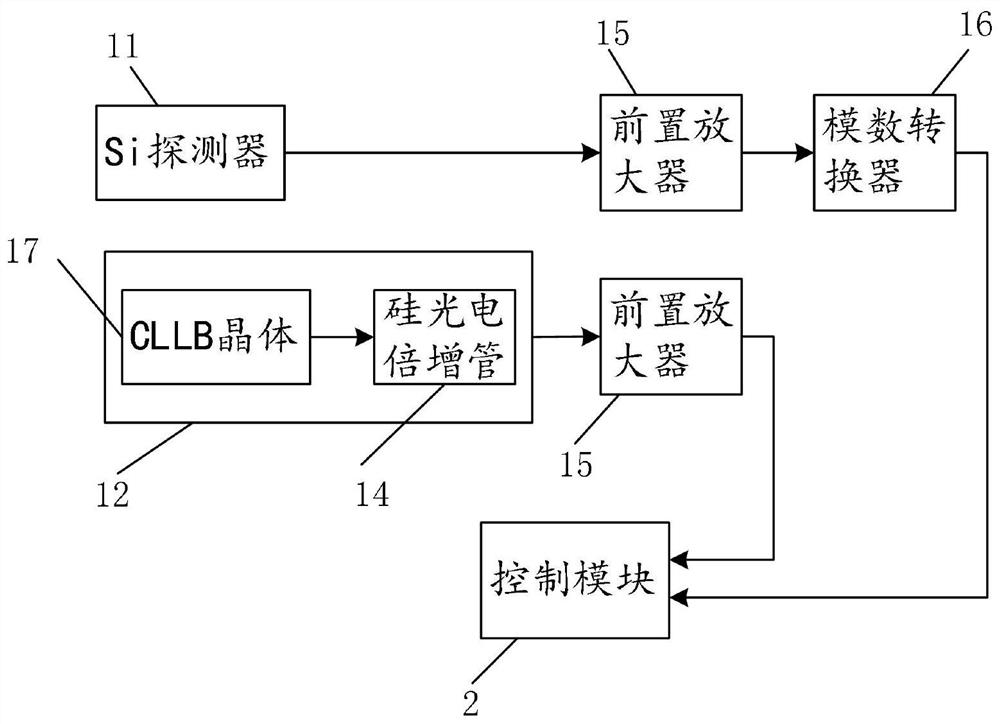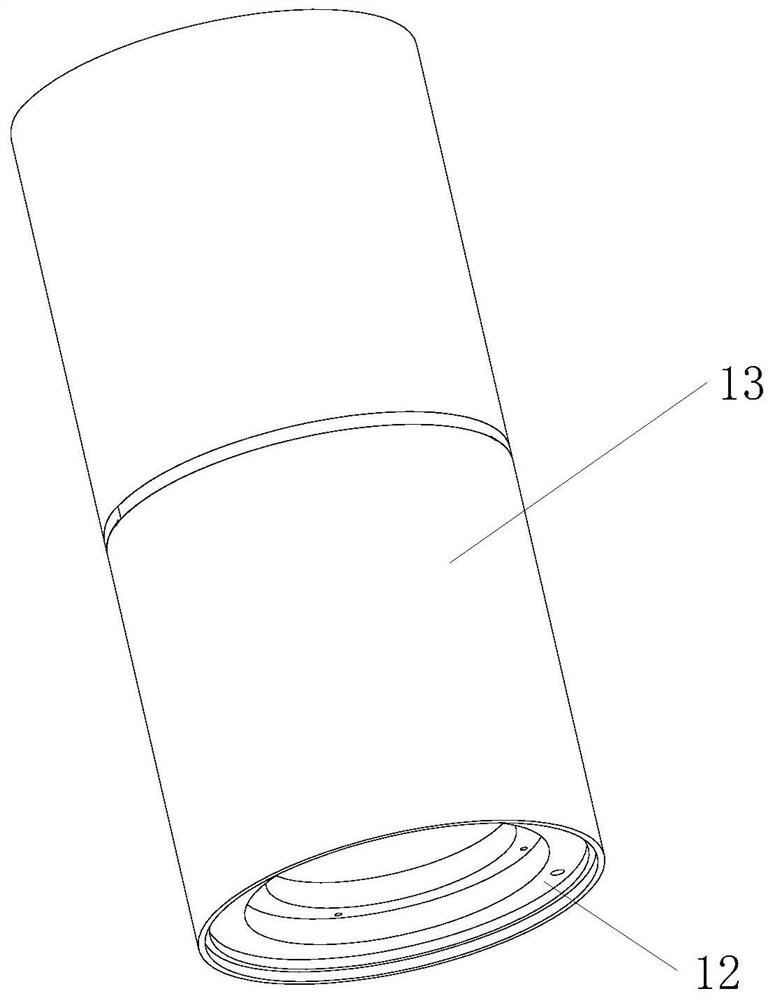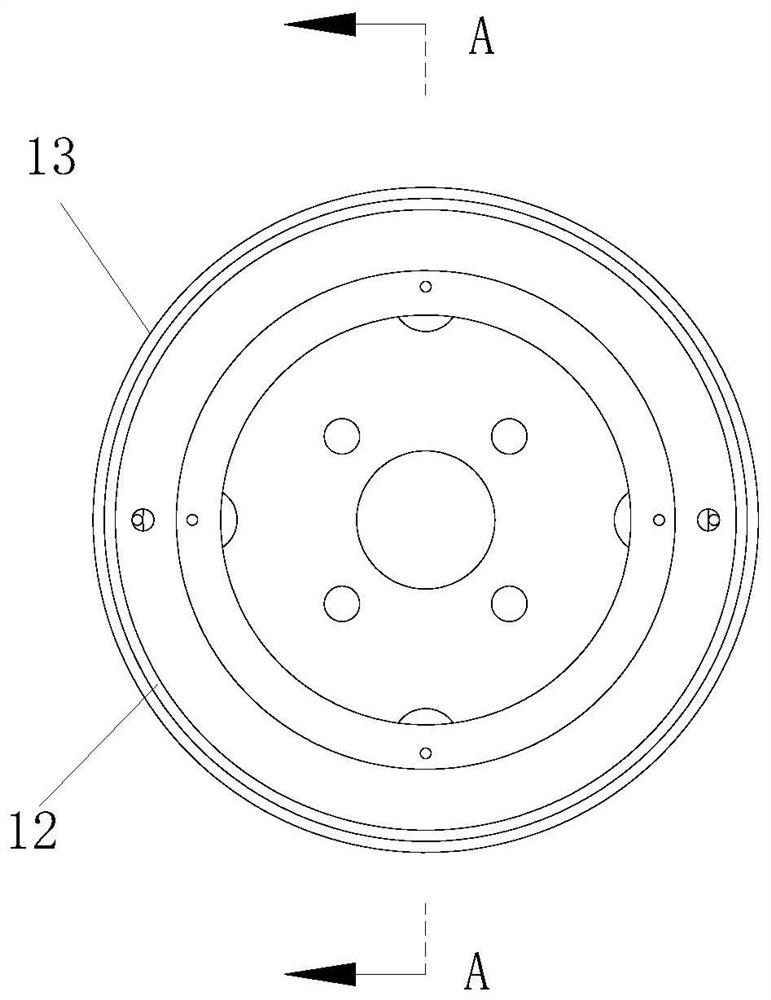Space radiation detection device and method
A space radiation and detection device technology, applied in the field of space radiation detection, can solve problems such as poor energy resolution, low detection efficiency, and poor particle discrimination ability, achieve high energy resolution, meet detection requirements, and improve the effect of discrimination ability
- Summary
- Abstract
- Description
- Claims
- Application Information
AI Technical Summary
Problems solved by technology
Method used
Image
Examples
Embodiment 1
[0039] refer to figure 1 As shown, Embodiment 1 of the present invention provides a space radiation detection device, including a Si-CLLB detector and a control module 2, and the Si-CLLB detector includes a Si detector 11 and a CLLB crystal detector arranged in sequence along the incident direction of radiation particles 12, Si detector 11 is coupled with CLLB crystal detector 12, and CLLB crystal detector 12 comprises CLLB crystal 17 and silicon photomultiplier tube 14, and silicon photomultiplier tube 14 is coupled with CLLB crystal 17, and silicon photomultiplier tube 14 is used for CLLB Fluorescence caused by radiation in the crystal 17 is converted into an electrical signal; the control module 2 is arranged on the Si-CLLB detector, and the CLLB crystal detector 12 outputs signal waveforms of different fast and slow components in the case of different radiation particles, and the control module 2 uses After pulse signal processing is performed on the output signal of the C...
Embodiment 2
[0047] refer to image 3 As shown, Embodiment 2 of the present invention provides a space radiation detection method, comprising the following steps:
[0048] In step 101 , radiation particles interact with Si atoms when passing through the Si detector 11 , and the energy loss value ΔE is recorded.
[0049] As an example, when radiation particles (including charged and uncharged particles) are incident from the front end, the radiation particles interact with Si atoms when passing through the Si detector 11, and the energy loss value ΔE in the Si detector 11 is recorded, because The volume of the Si detector 11 is not very large. After the interaction between the higher-energy space radiation particles and the Si atoms, the generated secondary particles or the original radiation particles that have not interacted will continue to follow the incident direction or interact with the Si atoms. The direction of incidence moves at an angle.
[0050] In step 102 , when secondary pa...
PUM
 Login to View More
Login to View More Abstract
Description
Claims
Application Information
 Login to View More
Login to View More - R&D
- Intellectual Property
- Life Sciences
- Materials
- Tech Scout
- Unparalleled Data Quality
- Higher Quality Content
- 60% Fewer Hallucinations
Browse by: Latest US Patents, China's latest patents, Technical Efficacy Thesaurus, Application Domain, Technology Topic, Popular Technical Reports.
© 2025 PatSnap. All rights reserved.Legal|Privacy policy|Modern Slavery Act Transparency Statement|Sitemap|About US| Contact US: help@patsnap.com



